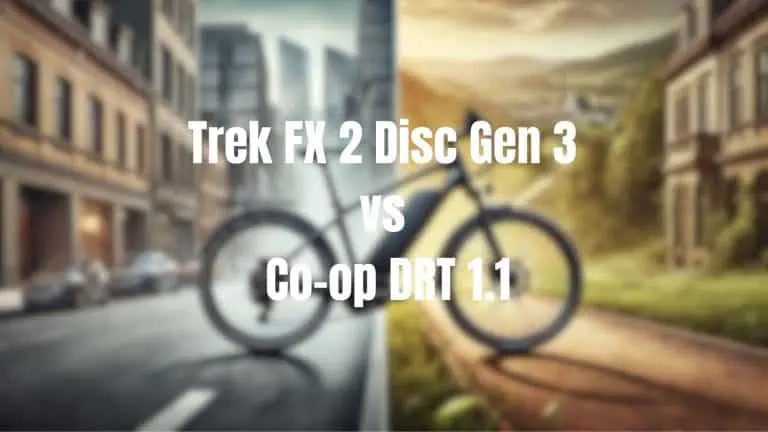Co-Op CTY e2.1 vs Co-op Cycles CTY e3.1: A Comprehensive Comparison

In the electric bike market, the Co-Op CTY e2.1 and the Co-op Cycles CTY e3.1 represent two options from the same brand but with different features and price points. Both are designed for urban riding, but they have some distinct differences. Let’s compare these two models to help you determine which might be the better fit for your needs.
Comparison Table
| Feature | Co-Op CTY e2.1 | Co-op Cycles CTY e3.1 |
|---|---|---|
| Price | $1,799.00 | $4,059.00 |
| Motor Type | Rear hub motor | Mid-drive motor |
| Power | 250W | 250W |
| Brakes | Mechanical disc | Mechanical disc |
| Pedal Assist vs. Throttle | Pedal-assist | Pedal-assist |
| Weight | 54 lbs. 8 oz. | 60 lbs |
Price and Value
- Co-Op CTY e2.1: $1,799.00
- Co-op Cycles CTY e3.1: $4,059.00
There’s a substantial price difference between these two models, with the Co-op Cycles CTY e3.1 being $2,260 more expensive than the Co-Op CTY e2.1. This significant price gap could be a deciding factor for many buyers, but it’s important to consider what each bike offers for its price.
Motor Type and Power
- Co-Op CTY e2.1: Rear hub motor, 250W
- Co-op Cycles CTY e3.1: Mid-drive motor, 250W
While both bikes feature 250W motors, their types differ. The CTY e2.1 uses a rear hub motor, while the CTY e3.1 employs a mid-drive motor. Mid-drive motors are generally considered more efficient, especially on hills, as they can leverage the bike’s gears. They also provide a more balanced weight distribution. Rear hub motors, while simpler, can still provide a smooth and effective ride, especially in urban settings.
Brakes
Both bikes are equipped with mechanical disc brakes. This is a tie in terms of braking performance, with both bikes offering reliable stopping power. However, it’s worth noting that at the higher price point of the CTY e3.1, some buyers might expect hydraulic disc brakes for improved performance and easier maintenance.
Pedal Assist vs. Throttle
Both bikes use pedal-assist systems, meaning they provide power only when you’re pedaling. This creates a more natural riding experience and can help extend battery life compared to throttle-only systems.
Weight
- Co-Op CTY e2.1: 54 lbs. 8 oz.
- Co-op Cycles CTY e3.1: 60 lbs
The Co-Op CTY e2.1 is about 5.5 pounds lighter than the Co-op Cycles CTY e3.1. This weight difference could be noticeable when handling the bike off the road, such as when lifting it onto a bike rack or carrying it up stairs.
Additional Considerations
- Brand Consistency: Both bikes are from Co-op Cycles, REI’s house brand, which means they both come with the backing of REI’s customer service and their excellent return policy.
- Motor Placement: The mid-drive motor on the CTY e3.1 provides a more balanced weight distribution and potentially better handling, especially on steep inclines.
- Components: Given the significant price difference, it’s likely that the CTY e3.1 uses higher-end components overall, which could contribute to a smoother ride and longer lifespan. However, specific component details would need to be compared to confirm this.
- Intended Use: Both bikes are designed for urban riding, but the CTY e3.1’s mid-drive motor might make it more suitable for hilly terrain or longer rides.
Which is Better?
The choice between these two e-bikes depends on your specific needs and preferences:
- Budget: If price is a major factor, the Co-Op CTY e2.1 is the clear winner, offering significant savings.
- Performance: The Co-op Cycles CTY e3.1, with its mid-drive motor, likely offers better efficiency and more natural-feeling assistance, especially on varied terrain and hills.
- Weight: The Co-Op CTY e2.1 is lighter, which could be important if you need to carry the bike frequently.
- Long-term Investment: If you’re looking for a higher-end e-bike and are willing to invest more upfront, the CTY e3.1 might offer better long-term value with potentially higher-quality components.
In conclusion, the Co-Op CTY e2.1 offers a solid entry-level e-bike experience at a more affordable price point. It’s great for urban riders who want an electric assist for their commutes without breaking the bank.
The Co-op Cycles CTY e3.1, while significantly more expensive, offers the efficiency and performance of a mid-drive motor. It might be preferable for those who want a more high-end, integrated e-bike experience and don’t mind paying a premium for it.
Consider your budget, daily commute, local terrain, and long-term cycling goals when making your decision. Both bikes offer quality rides under the trusted Co-op Cycles brand but cater to different price points and performance levels in the e-bike market.






